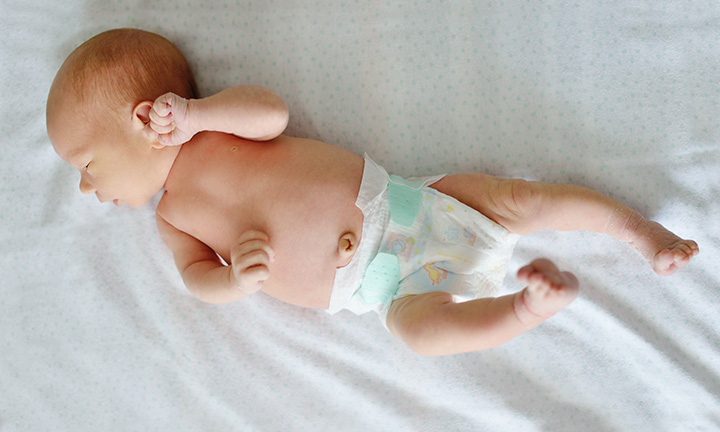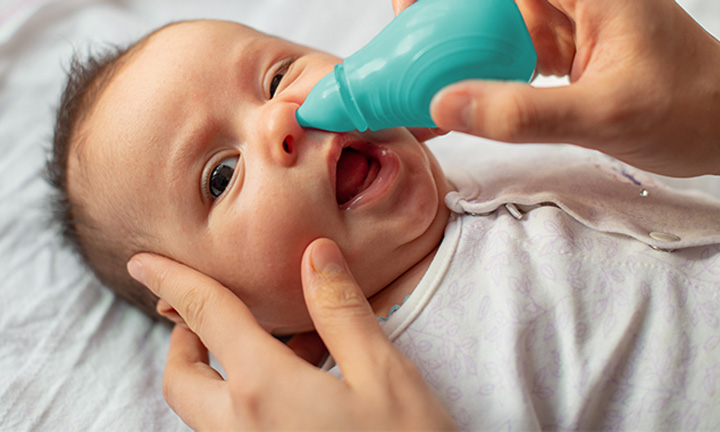
What Is Vernix Caseosa? Benefits for Your Newborn’s Skin


Vernix caseosa is a naturally occurring, white, waxy substance that coats a newborn’s skin during the final trimester of pregnancy. Often described as “cheese-like,” it plays a crucial role in protecting the baby both in the womb and immediately after birth. Composed of water, lipids, and proteins, vernix acts as a barrier against amniotic fluid, preventing the baby’s skin from becoming overly wrinkled, dry, or chapped.
However, the benefits of vernix extend well beyond delivery. It may offer antimicrobial protection, help regulate body temperature, and support the skin’s healing and moisture balance as your baby adjusts to life outside the womb.
Key benefits of vernix caseosa:
Given these protective qualities, many healthcare providers now support delaying a baby’s first bath to allow time for the vernix to absorb naturally into your little one’s skin.
In the sections that follow, we’ll explore the science, the evolving recommendations, and the vernix caseosa benefits—including how this white substance on newborns supports your baby’s health right from the start.
What Is Vernix Caseosa?
Vernix caseosa, often referred to simply as vernix, is the white, creamy substance you might notice on your newborn’s skin right after birth. The definition of vernix caseosa is literally “varnish of a cheesy nature,” and it fits. This white stuff on newborns looks thick and waxy, resembling a natural moisturizer.
This white substance on newborns starts forming around 17 weeks of pregnancy, produced by your baby’s sebaceous glands, which help lubricate the skin. The vernix coating begins to cover the skin during the second trimester, working as a protective barrier in the womb.
Vernix caseosa in newborns is simply a creamy, greasy substance mostly composed of water, lipids, and proteins. It contains enzymes and other innate immune proteins that have antibacterial properties, protecting the skin of your little one from constant exposure to amniotic fluid, preventing it from becoming too soft or waterlogged.
Babies Born with a Lot of Vernix
Once a baby is born, you may see a newborn with vernix still visible, especially if they arrived a little early. That white stuff after being born is more than just leftover birth residue; it continues to help protect their delicate skin even after delivery. If your baby is born with lots of vernix, don’t worry, as it’s completely normal and often a good sign of a healthy or slightly early delivery. This creamy coating acts like a gentle moisturizer and may even help regulate body temperature during those first few hours after birth.
Babies Born Without Vernix
You may notice that your baby is born without vernix or has only tiny patches. In full-term or post-term babies, the vernix caseosa usually starts to wear off in the final weeks of pregnancy, so it may not be visible by the time they’re born. By the time vernix naturally decreases, your little one’s skin has already benefited from its protective properties inside the uterus. However, if you have any concerns about your baby’s skin condition or appearance at birth, consult your baby’s healthcare provider for guidance.
Benefits of Vernix
You can think of vernix caseosa as your little one's first line of defense. This creamy, white coating doesn’t just protect your baby’s skin while in the womb; it continues to offer unique support in the early hours after birth. The benefits of vernix extend far beyond the skin's surface. More than just a moisturizer, vernix caseosa functions as a protective biofilm, a natural antibacterial layer, and even a delivery aid. Its texture and composition play a role in protecting and supporting newborn skin, as well as regulating temperature. That’s why many parents and healthcare professionals today emphasize the benefits of leaving vernix on the baby rather than wiping it off immediately.
The Benefits of Vernix Caseosa in the Womb
Before birth, vernix caseosa plays a vital role in maintaining your baby’s skin health and overall development inside the uterus. The vernix benefits in utero include:
During vaginal delivery, vernix serves as a lubricant, protective biofilm, and antimicrobial barrier against bacteria in the genital tract.
The Benefits of Vernix Caseosa After Birth
Even after your little one is born, vernix caseosa benefits continue to make an impact:
How Long Should You Leave Vernix Caseosa on Your Baby?
In the past, many hospitals and birthing centers would perform your baby’s first bath within an hour or two of delivery. But that practice is shifting. As research evolves, more healthcare providers are recognizing the benefits of delaying a baby’s first bath and allowing vernix caseosa to remain on the skin for longer periods.
When your baby is born, they may be covered in amniotic fluid, traces of blood, and visible vernix. It’s completely natural to want to clean them up, but you might also be wondering when to give the baby their first bath for the best skin and health outcomes.
The World Health Organization (WHO) recommends waiting at least 6 hours before bathing your newborn baby and ideally waiting about 24 hours. The WHO also recommends not wiping off the vernix at birth.
The main reasons to wait on your baby’s first bath include:
If you’re unsure about the best approach for your baby’s first bath, you can talk to your little one’s healthcare provider at the hospital. They can help guide you based on your baby’s condition and your personal preferences.
Are There Risks of Leaving Vernix Caseosa on Your Baby?
As mentioned above, it’s recommended to leave vernix on your baby’s skin for at least six hours, but preferably 24 hours. In certain situations, it is advisable to bathe your newborn shortly after birth. This is particularly important if the parent is HIV-positive or carries the hepatitis virus, as bathing can help reduce the risk of transmission to others. Additionally, it may be necessary to bathe the baby if they are born with chorioamnionitis or meconium staining.
Vernix Caseosa and Lanugo
In addition to vernix, you might also notice a fine, downy layer of hair on your baby’s skin at birth; this is called lanugo.
It's completely normal and may come as a surprise, especially if it’s your first time seeing a newborn up close.
Lanugo covers your little one’s skin during the latter part of your pregnancy and usually sheds before birth. There’s a fascinating relationship between vernix caseosa and lanugo. While in the uterus, lanugo helps vernix adhere to the skin, forming a protective, stable layer. Lanugo is the first type of hair your baby has!
Lanugo typically appears in the second trimester and usually sheds before birth. However, about 30% of babies, especially those born prematurely, are born with lanugo still present on areas like the back.
After birth, lanugo and vernix both naturally disappear. If your little one is born with visible lanugo, it usually sheds within the first week or two. You don’t need to do anything to remove it—it fades on its own without causing discomfort.
Whether your baby has a full coating of vernix, a patch of lanugo, or both, these features are all signs of your baby’s development and journey through the final stages of pregnancy. If you’re ever unsure whether something on your newborn's skin is typical, reach out to your baby’s healthcare provider for peace of mind.
FAQS AT A GLANCE
In the past, hospital staff would bathe a newborn baby an hour or two after birth. It’s now recommended to delay bathing and removing vernix to promote bonding, keep your baby warm, and prevent their skin from drying out.
The Bottom Line
Vernix caseosa has lots of benefits for your baby, both when they’re still in the uterus and in the hours after birth.
If possible, consider delaying your baby’s first bath by at least 6 hours, or ideally 24 hours, as recommended by the World Health Organization. This can give your little one time to absorb the full benefits of vernix and allows you both to focus on bonding through skin-to-skin contact, early breastfeeding, and rest.
Even though vernix might look a little sticky or unexpected at first, it's worth remembering that this white coating on newborns plays a meaningful role in their early days of life. Before long, your little one will be clean, snuggly, and ready for kisses—but for now, that vernix layer is quietly working to protect their delicate skin.
For more information on baby skin care, read up on caring for delicate newborn skin. And while you’re here, get ahead of the game by downloading the Pampers Rewards App for exclusive rewards and discounts on your diaper purchases.
- American Academy of Pediatrics. Caring for Your Baby and Young Child: Birth to Age 5, 7th ed. (New York: Bantam Books, 2019).
- American College of Obstetricians and Gynecologists. Your Pregnancy and Childbirth: Month to Month, 6th ed. (Washington, DC: American College of Obstetricians and Gynecologists, 2015).
- Cleveland Clinic. “What Is Lanugo?”
- Healthy Children. “Bathing Your Baby.”
- ICEA. “Delayed Bathing.”
- Journal of Perinatology. “Vernix Caseosa in Neonatal Adaptation.”
- Kids Health. “The First Day of Life.”
- Mayo Clinic. “Fetal development: The 2nd Trimester.”
- NHI. “Delaying the Bath and In-Hospital Breastfeeding Rates.”
- NCBI. “Is There a Preventive Role for Vernix Caseosa?: An Invitro Study.”
- NCBI. “Unraveling the Mystery of Vernix Caseosa.”
- NCBI. “Vernix Caseosa.”
Read more about Baby
Related Articles
Join a World of Support
through Pregnancy and Parenthood.
TRACK WITH TOOLS
LEARN WITH EXPERTS
GET REWARDED














